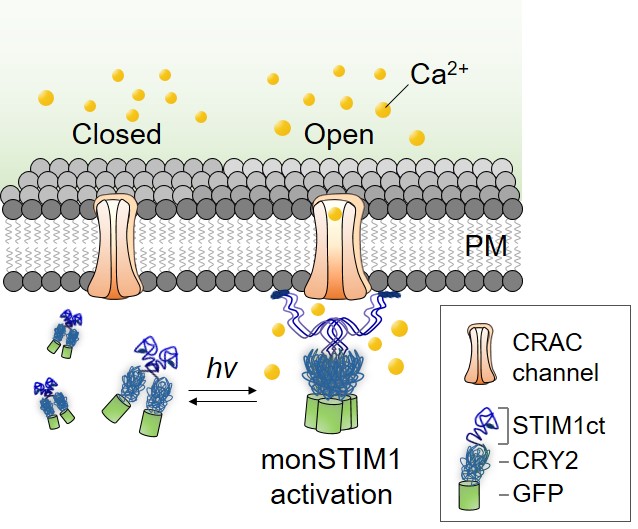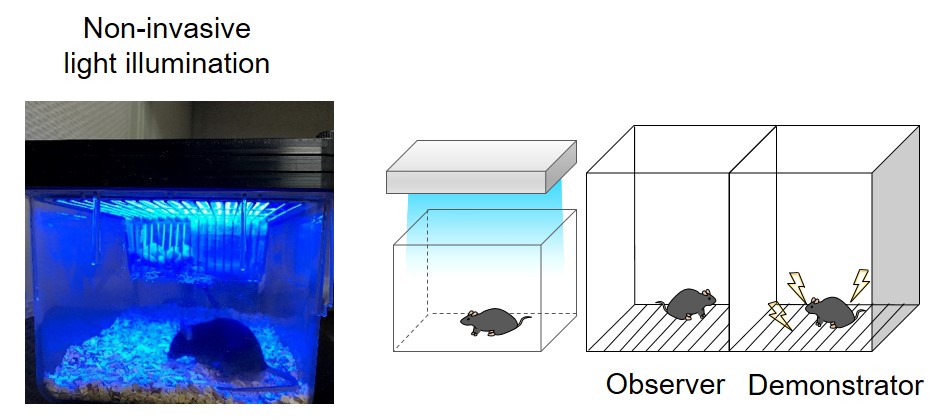주메뉴
- About IBS 연구원소개
-
Research Centers
연구단소개
- Research Outcomes
- Mathematics
- Physics
- Center for Theoretical Physics of the Universe(Particle Theory and Cosmology Group)
- Center for Theoretical Physics of the Universe(Cosmology, Gravity and Astroparticle Physics Group)
- Center for Exotic Nuclear Studies
- Dark Matter Axion Group
- Center for Artificial Low Dimensional Electronic Systems
- Center for Underground Physics
- Center for Axion and Precision Physics Research
- Center for Theoretical Physics of Complex Systems
- Center for Quantum Nanoscience
- Center for Van der Waals Quantum Solids
- Center for Relativistic Laser Science
- Chemistry
- Life Sciences
- Earth Science
- Interdisciplinary
- Center for Neuroscience Imaging Research(Neuro Technology Group)
- Center for Neuroscience Imaging Research(Cognitive and Computational Neuroscience Group)
- Center for Algorithmic and Robotized Synthesis
- Center for Genome Engineering
- Center for Nanomedicine
- Center for Biomolecular and Cellular Structure
- Center for 2D Quantum Heterostructures
- Center for Quantum Conversion Research
- Institutes
- Korea Virus Research Institute
- News Center 뉴스 센터
- Career 인재초빙
- Living in Korea IBS School-UST
- IBS School 윤리경영


주메뉴
- About IBS
-
Research Centers
- Research Outcomes
- Mathematics
- Physics
- Center for Theoretical Physics of the Universe(Particle Theory and Cosmology Group)
- Center for Theoretical Physics of the Universe(Cosmology, Gravity and Astroparticle Physics Group)
- Center for Exotic Nuclear Studies
- Dark Matter Axion Group
- Center for Artificial Low Dimensional Electronic Systems
- Center for Underground Physics
- Center for Axion and Precision Physics Research
- Center for Theoretical Physics of Complex Systems
- Center for Quantum Nanoscience
- Center for Van der Waals Quantum Solids
- Center for Relativistic Laser Science
- Chemistry
- Life Sciences
- Earth Science
- Interdisciplinary
- Center for Neuroscience Imaging Research(Neuro Technology Group)
- Center for Neuroscience Imaging Research(Cognitive and Computational Neuroscience Group)
- Center for Algorithmic and Robotized Synthesis
- Center for Genome Engineering
- Center for Nanomedicine
- Center for Biomolecular and Cellular Structure
- Center for 2D Quantum Heterostructures
- Center for Quantum Conversion Research
- Institutes
- Korea Virus Research Institute
- News Center
- Career
- Living in Korea
- IBS School
News Center
| Title | Blue light triggers memory and emphatic fear in mice via a non-invasive approach | ||
|---|---|---|---|
| Embargo date | 2020-01-21 16:28 | Hits | 1562 |
| Research Center |
Center for Cognition and Sociality |
||
| Press release | |||
| att. | |||
Blue light triggers memory and emphatic fear in mice via a non-invasive approach- Improved optogenetic technique without the need of optic fiber implants controls calcium signaling in the brain of mice changing their behavior - Researchers at the Center for Cognition and Sociality, within the Institute for Basic Science (IBS) in South Korea, have engineered an improved biological tool that controls calcium (Ca2+) levels in the brain via blue light. Published in Nature Communications, this optogenetic construct, called monster-OptoSTIM1 or monSTIM1 for short, causes a change in mice’s fear learning behavior without the need of optic fiber implants in the brain. The brain utilizes Ca2+ signaling to regulate a variety of functions, including memory, emotion, and movement. Several evidences show correlation between abnormally regulated Ca2+ levels in certain brain cells and neurodegenerative diseases, but the details still remain obscure. For understanding the precise role of Ca2+ signaling, the IBS team is studying Ca2+-specific modulators that can be triggered in different parts of the brain at a designated time. Optogenetics uses light to control Ca2+ signaling in the mouse brain. Since the brain is surrounded by hair, skin and skull, which prevent light from reaching deep tissues, optic fiber insertion in the brain used to be the norm in optogenetics. However, these implants can cause inflammation, morphological changes of neurons and disconnection of neural circuits. In this study, the research team improved their optogenetic tool so that it works with an external source of blue light, shone from the ceiling of the mouse cage, and without the need of brain implants. MonSTIM1 is made of a part (CRY2) that responds to blue light and another part (STIM1) that activates calcium channels. Compared to the previously developed optogenetic techniques, the researchers were able to enhance CRY2’s light-sensitivity approximately 55-fold and also avoid the increase of basal Ca2+ levels. The monSTIM1 construct was injected into the mouse brain through a virus, and was shown to activate Ca2+ signals in the cortex as well as in the deeper hippocampus and thalamus regions. The team observed behavioral changes in mice with monSTIM1 expressed in excitatory neurons in the anterior cingulate cortex, a brain region that has a central function in empathic emotions. Mice with activated monSTIM1 froze with fear by looking at other mice, which experienced a mild electric foot shock. Twenty-four hours later the same mice remembered about it and showed again an enhanced fear response, indicating that Ca2+ signaling contributed to both short- and long-term social fear responses. “MonSTIM1 can be applied to a wide range of brain calcium research and brain cognitive science research, because it allows easy manipulation of intracellular calcium signals without damaging the brain,” says Won Do Heo (KAIST professor), leading author of this research.
Notes for editors - References - Media Contact - About the Institute for Basic Science (IBS) |
|||
|
|
|||
| Next | |
|---|---|
| before |
- Content Manager
- Communications Team : Kwon Ye Seul 042-878-8237
- Last Update 2023-11-28 14:20













